Bathroom Tile: Loving the Look of Ledgestone
http://decor-ideas.org 08/19/2013 20:45 Decor Ideas
The natural look and feel of ledgestone tile makes a stunning statement in today's bathrooms. Ledgestone tile, also called stacked stone, comes in many shapes, sizes, colors and stone types. It does come at a cost — both in budget and maintenance. Before you choose ledgestone for your bathroom, here are some things to know.
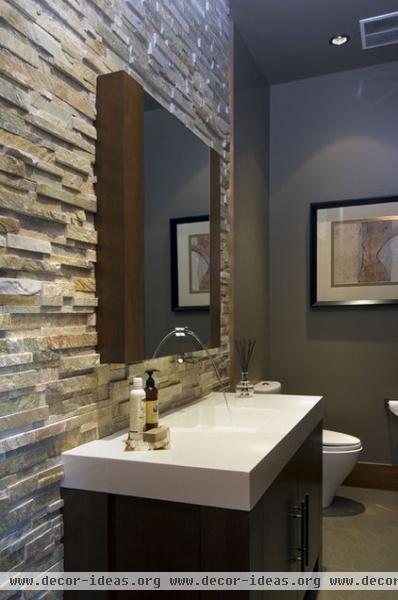
The basics: Ledgestone or stacked stone tile is usually made of natural stone — commonly slate or quartz — pre-cut into thin, rectangular pieces at different heights. When installed, the stone wall has a dramatic texture that creates an immediate focal point in bathrooms.
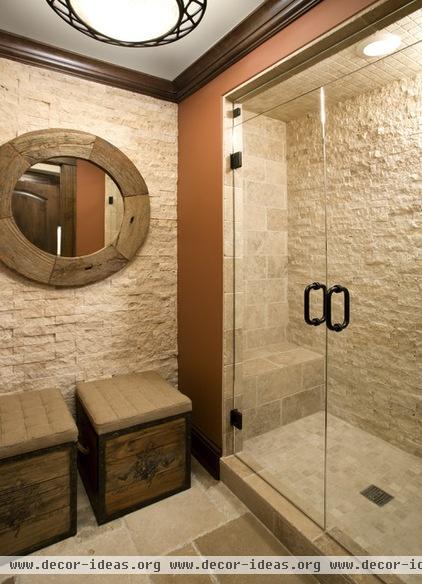
Cost: $7 to $14 per square foot, on average
Size: Most ledgestone pieces come in 6-by-20-inch or 6-by-24-inch pieces, which are made up of four rows of stone glued together.
Stone can be sold in loose pieces, too. Most often the stone is 3/4 to 1 inch thick, although some larger stone comes in pieces 2 to 5 inches thick.
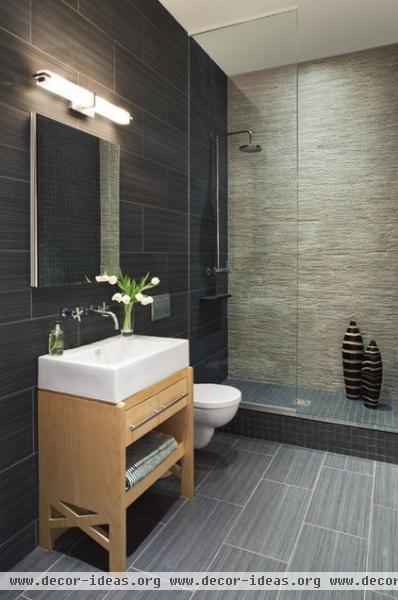
Advantages: Ledgestone has great texture, and works well in a variety of styles. Most bathrooms with ledgestone use it on a single feature wall, although occasionally it's installed throughout the space. Many homeowners choose to add downlighting and wash these walls with light to highlight the texture and shadows that the ledgestone creates.
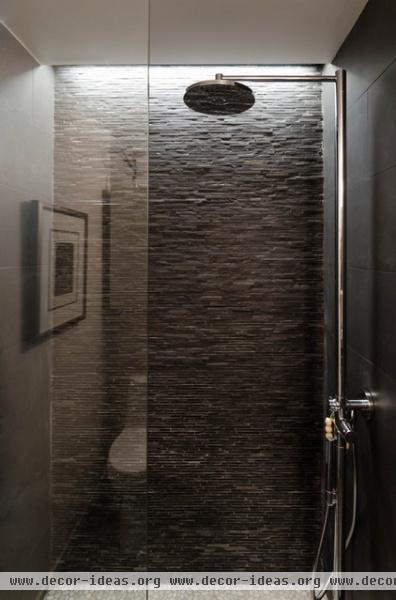
Disadvantages: Since it's made of natural stone, most ledgestone is very heavy and can damage finished pieces (mirrors, sinks, fixtures) in your bathroom during installation. Butting up ledgestone against a mirror is risky, since there's no easy fix if the mirror is damaged.
Safety should be considered too, especially in families with children or seniors. Falling against these rough surfaces in a shower will certainly hurt more than with a smooth wall.
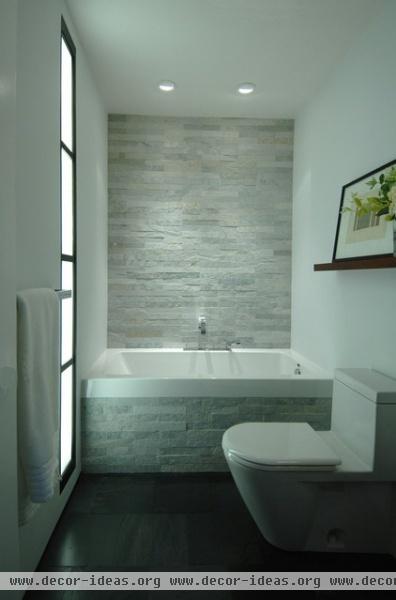
Maintenance: If you're a clean freak, a ledgestone wall probably isn't your best option.
The different levels, cracks and textures can take time to keep clean. You'll want to get in the habit of washing down the walls with water after every shower.
Personally, I think this tile is best left to guest rooms or on focal points outside the shower, as in this photo.
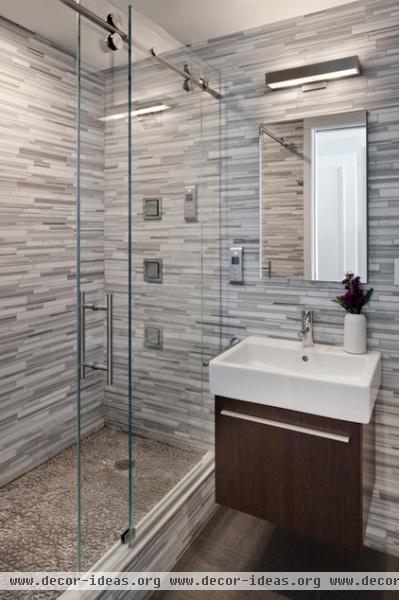
If you want easier cleaning, make sure your ledgestone is sealed well and grouted after installation to fill in any voids between the stones. You can also look for a flat tile design like this one, which has a similar depth and illusion of texture to ledgestone, but is much easier to keep clean.
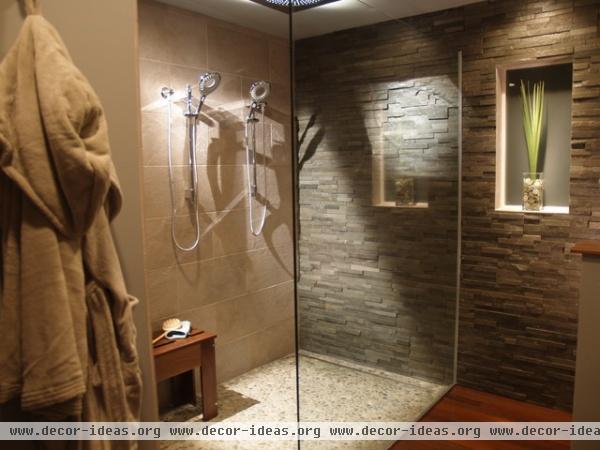
Sustainability: Since most pieces of ledgestone are made of waste from production sites, it can be an ecofriendly choice.
However, keep in mind that any stone not locally sourced or sourced from a site with poor credibility will lose its sustainable value.
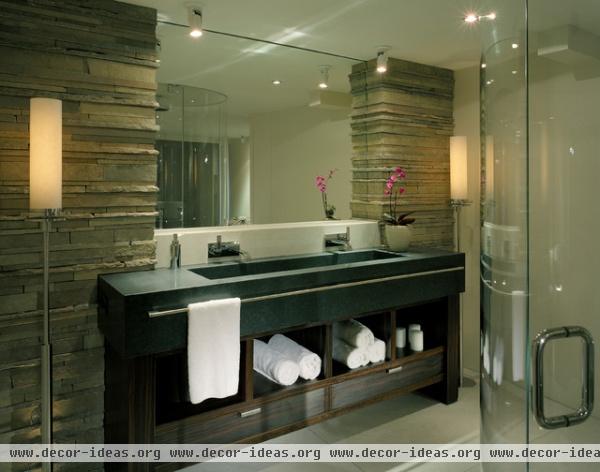
Special Considerations
When you design a ledgestone shower, remember that you'll need to install a shower glass panel. Make sure your installer leaves a slight channel in the stone to slide the glass in. Leaving out a couple of rows of stone above the glass top can make this easier.
Ledgestone surrounding mirrors makes for a wonderful focal point, but you'll want to make sure the edge of the stone and mirror are totally clean. After the installation, you'll be able to see the reflection of the back of the stone, and it won't be fun if you're stuck with a dirty view.
Related Articles Recommended












